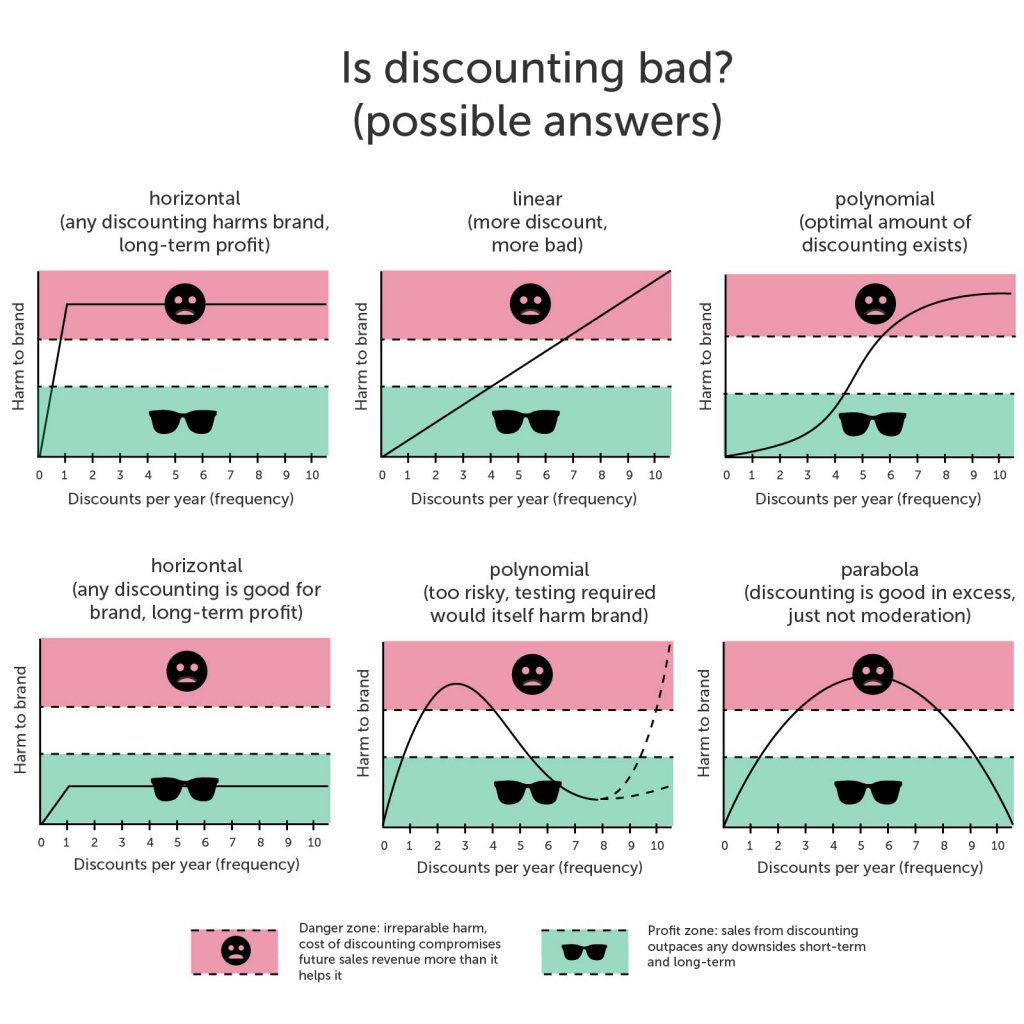Yesterday we talked a little about using the exposure-response model to help think about when and how much discounting is bad:

Maybe you can you sneak a discount or two in annually without an issue.
Maybe a comprehensive discounting strategy will always net you more long-term, you just have to keep doing it.
Maybe discounting will always hurt you.
Consumers’ innumeracy
Basically, immuneracy is the inability to do math. People are bad at math on the fly.
Because people are bad at doing fractions in their heads, they:
Often struggle to realise, for example, that a 50% increase in quantity is the same as a 33% discount in price. They overwhelmingly assume the former is better value.
via The Economist
Simply put, you can frame a deal a certain way and impact users’ perception of an offer’s value. Get good at it and you can optimize for buyer perception of value while minimizing your cost to discount.
Aside: Whether this is ethical is a totally other conversation that, I believe, requires a deeper understanding of the gap being exploited. For example, if people most accurately understand the value of a deal in terms of percentage off at prices over $100, then you are helping people accurately assign value of an offer by using percentages. If you can confuse them into spending more and getting less, as is in the case with adding discounts on top of discounts, vs telling them the total percentage discount, maybe that’s the line.
I’m reviewing some concepts in pricing research. Here’s what I’ve found so far:
Base Value Neglect
a substantial advantage [exists] in sales volume for a bonus pack over an economically equivalent price discount
(Chen, Marmorstein, Tsiros, & Rao, 2012)
Basically people think bonuses are worth more than percentage discounts of the same value. A lot of research has supported this finding, but the above multi-approach study is the first to theorize that percentage discounts lead people to neglect the “base value” of the product.
In info product world, when you have tiered product levels:
- base product (maybe an ebook)
- product + bonus assets (maybe worksheets, audio)
- product + bonus assets + consulting call
People typically pick the middle option, which is also luckily for people doing these tiered options, the most profitable (or at least most scalable/least labor intensive).
The idea of base value neglect better explains and predicts consumer behavior than other price theory out there:
There is a “mental accounting explanation” which suggests consumers would see a bonus as X amount of gain vs a discount as preventing the same X amount of loss.
But any loss aversion theory would have us comparing the “loss” of the bonuses vs the “loss” of money not opting for the discounted base product.
Whatever the underlying cause, bonuses are better than discounts.
More later, maybe.
